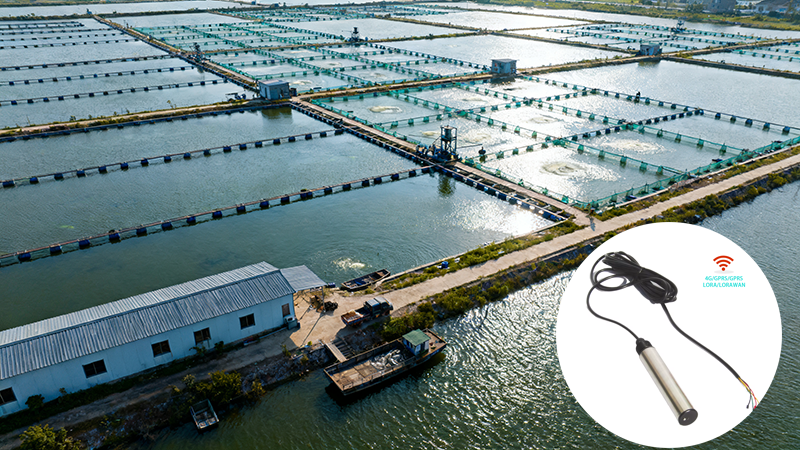Subtitle: Moving from guesswork to data-driven insights, turbidity sensors are quietly revolutionizing the rules of the game in this multi-billion peso industry.
Water turbidity sensor
[Manila, Philippines] – Across major aquaculture hubs in Iloilo, Batangas, and beyond, a seemingly humble yet critical technology—the water turbidity sensor—is being rapidly adopted by large-scale farms. No longer confined to laboratories, these devices have become “ever-vigilant sentinels” at pond sides, safeguarding the environment for high-value species like shrimp and grouper, and directly impacting farmers’ bottom lines.
From Invisible to Instantly Visible: Moving Beyond Guesswork
Traditionally, farmers assessed water quality based on experience: visually observing water color and clarity, or using a Secchi disk to estimate visibility. This method was not only crude but also ineffective against sudden, critical changes in water conditions.
“A sudden downpour or an unexpected disturbance can cause turbidity to spike within hours,” explained an engineer providing technical services in the region. “By the time the human eye perceives the water as muddy, the fish or shrimp may already be stressed, setting the stage for disease outbreaks.”
Now, submerged turbidity sensors continuously monitor the concentration of suspended particles in the water, transmitting data in real-time to farmers’ smartphones or a central control room. This shift from “educated guessing” to “data-driven decision-making” marks a fundamental leap forward for the industry.
Precision Management: Tackling Core Industry Challenges
For large-scale Philippine aquaculture operators, the impact of turbidity sensors is direct and profound:
- Safeguarding the Oxygen Lifeline: Excessively turbid water inhibits phytoplankton photosynthesis, leading to dangerous drops in dissolved oxygen (DO). Real-time turbidity data can be linked to aerators, triggering them before oxygen levels become critical, thereby preventing massive die-offs.
- Reducing Feed Waste, Controlling Costs: When water is too muddy, farmers cannot see uneaten feed at the pond bottom. Sensor data guides precise feeding, preventing excess feed from decomposing and worsening water quality, potentially saving up to 15% on feed costs.
- Early Disease Warning: An abnormal turbidity spike is often a precursor to deteriorating water quality and bacterial growth. Early alerts give farmers time to conduct further tests and intervene, reducing reliance on antibiotics and ensuring product safety.
- Building Climate Resilience: Frequent typhoons and heavy rains in the Philippines can instantly muddy ponds. Sensors provide an objective, quantitative basis for farmers to make scientific decisions post-storm, determining how and when to use water conditioners most effectively, optimizing costs and outcomes.
Technology Empowerment and Future Outlook
The value of turbidity sensors is maximized when integrated with other water quality parameters (like pH, DO, and ammonia) into an Internet of Things (IoT) monitoring system. Farmers can gain a comprehensive, dashboard-level view of the “underwater world,” achieving true precision aquaculture.
Industry experts conclude: “While challenges of cost and awareness remain, the return on investment is clear. For large-scale Philippine aquaculture enterprises pursuing sustainable and profitable growth, investing in intelligent water quality monitoring is no longer an option, but a necessity. This not only enhances their risk resilience and profitability but is also a core driver in modernizing the entire Philippine aquaculture sector and aligning it with international standards.”
We can also provide a variety of solutions for
1. Handheld meter for multi-parameter water quality
2. Floating Buoy system for multi-parameter water quality
3. Automatic cleaning brush for multi-parameter water sensor
4. Complete set of servers and software wireless module, supports RS485 GPRS /4g/WIFI/LORA/LORAWAN
For more water sensor information,
please contact Honde Technology Co., LTD.
Email: info@hondetech.com
Company website: www.hondetechco.com
Tel: +86-15210548582
Post time: Oct-21-2025


